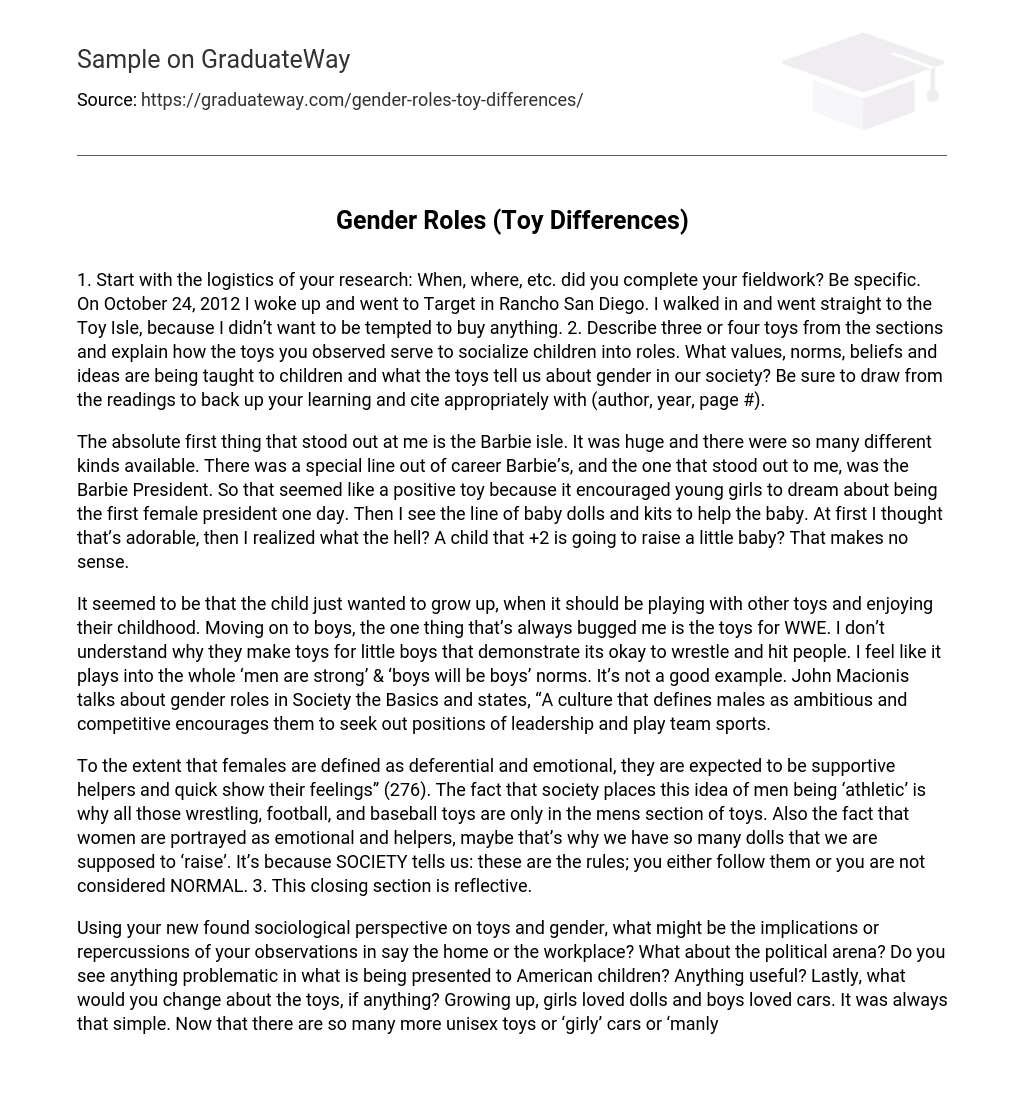1. Start with the logistics of your research: When, where, etc. did you complete your fieldwork? Be specific. On October 24, 2012 I woke up and went to Target in Rancho San Diego. I walked in and went straight to the Toy Isle, because I didn’t want to be tempted to buy anything. 2. Describe three or four toys from the sections and explain how the toys you observed serve to socialize children into roles. What values, norms, beliefs and ideas are being taught to children and what the toys tell us about gender in our society? Be sure to draw from the readings to back up your learning and cite appropriately with (author, year, page #).
The absolute first thing that stood out at me is the Barbie isle. It was huge and there were so many different kinds available. There was a special line out of career Barbie’s, and the one that stood out to me, was the Barbie President. So that seemed like a positive toy because it encouraged young girls to dream about being the first female president one day. Then I see the line of baby dolls and kits to help the baby. At first I thought that’s adorable, then I realized what the hell? A child that +2 is going to raise a little baby? That makes no sense.
It seemed to be that the child just wanted to grow up, when it should be playing with other toys and enjoying their childhood. Moving on to boys, the one thing that’s always bugged me is the toys for WWE. I don’t understand why they make toys for little boys that demonstrate its okay to wrestle and hit people. I feel like it plays into the whole ‘men are strong’ & ‘boys will be boys’ norms. It’s not a good example. John Macionis talks about gender roles in Society the Basics and states, “A culture that defines males as ambitious and competitive encourages them to seek out positions of leadership and play team sports.
To the extent that females are defined as deferential and emotional, they are expected to be supportive helpers and quick show their feelings” (276). The fact that society places this idea of men being ‘athletic’ is why all those wrestling, football, and baseball toys are only in the mens section of toys. Also the fact that women are portrayed as emotional and helpers, maybe that’s why we have so many dolls that we are supposed to ‘raise’. It’s because SOCIETY tells us: these are the rules; you either follow them or you are not considered NORMAL. 3. This closing section is reflective.
Using your new found sociological perspective on toys and gender, what might be the implications or repercussions of your observations in say the home or the workplace? What about the political arena? Do you see anything problematic in what is being presented to American children? Anything useful? Lastly, what would you change about the toys, if anything? Growing up, girls loved dolls and boys loved cars. It was always that simple. Now that there are so many more unisex toys or ‘girly’ cars or ‘manly’ dolls, it’s more acceptable to do the vise versa.
I see the toy isles as a huge concern for future generations because it’s so separated from boys-girls toys. Its all pink and purple for girls and blue and red for boys. The Barbie’s are all tan and skinny and Ken has a six-pack. The toy car is a freaking MERCEDES. What is this teaching children? In order to be cute, you have to be skinny and drive a nice brand of car. Toy makers seem to be making more and more toys that teach the kids unrealistic realities. Most people will not drive a Mercedes or be a princess in a castle, or be a Nascar driver. I would change the toys to make them more realistic and less separate – gender wise.





